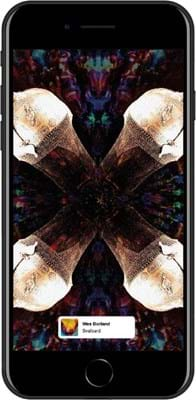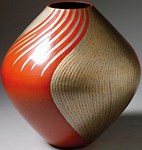
It is an uneasy time to run a physical event in the UK art world with restrictions in flux, lockdowns returning and buyers trapped overseas or sheltering at home.
After months of planning, much of the annual festival Asian Art in London (AAL) is still taking place in gallery spaces around the capital, but like many businesses, both the event and its participants have found the internet to be a vital resource in keeping things moving and fostering relationships this year.
“It is our best route at the moment,” dealer Francesca Galloway tells ATG of her online presence. Her Mayfair gallery, one of around 25 dealer participants in this year’s AAL, has been working on updating its online presence since March. “When lockdown came, we were in New York for Asia Week,” says the gallery’s Christine Ramphal. “We came back to London and found ourselves in a totally new world.”
So the firm devised a series of videos to post on its Instagram, pushing information rather than stock.
The videos started receiving tens of thousands of hits and the gallery went on to arrange small online exhibitions such as Women at the Mughal Court and Indian Drawing.
The Instagram video introducing the Women at the Mughal Court catalogue received more than 36,000 views, and longer videos hosted by Galloway went on the gallery’s website to introduce buyers to the subject and works.
“It was a process. We had to learn a lot of new techniques,” Ramphal says. “We felt very encouraged by the response we got.”
New and returning buyers contacted the gallery. Meanwhile, around seven objects sold to museums without representatives travelling to see them first.
“Curators wouldn’t have done that last year,” Galloway says. “The market has changed. It hasn’t got worse, but it has changed.”
Still, she stresses that both physical shows and events are integral to the business. “AAL is still important and clients are still happy interacting,” she says. “It’s about knowing who would like what and keeping in touch with them.”
For AAL, the gallery’s Indian Painting catalogue is available online with accompanying videos. It runs until October 31.
Instagram inroads
Some dealer participants are already au fait with online possibilities.
Dealer Runjeet Singh, for example, has more than 10,000 Instagram followers. He has been building his profile over the last few months with New York brand builder Julian Leon, who compiles a number of 15-second video and music clips based on objects from Singh’s stock to share on his Instagram ‘stories’ page.
“Perhaps the platform and the choice of music may appeal to a younger audience, which is always a challenge for antique dealers,” Singh says of his Takeover series.
“So far it has had great success not only with younger consumers, but also music artists and their fans.”
The next collaboration, Takeover3, takes place on Singh’s account (@runjeet.singh) on October 30- November 1.
Learning process
For many other dealers, getting online is a learning process, though thanks to the efforts of AAL, participants have more of an digital presence than ever before this year.
“When we started organising the event during lockdown, we knew that this was not going to be a normal year and we didn’t even know if AAL was going to take place,” organiser Jacqueline Simcox says.
AAL quickly scrapped some of its major physical events such as the annual gala party and the guided tours series and started working on ways to promote the event virtually, including filming the awards ceremony in advance to broadcast online.
It relaunched its website, and, according to Simcox, one of the best-received efforts was a series of videos of dealers speaking on their specialist topics. Shortened, translated versions of the videos have been specially tailored to post on the Chinese social media site WeChat.
The new site also gives galleries more space to write about themselves and post photos (six objects rather than three can now feature per dealer) and now hosts a virtual gallery. Combining works from different business, the online gallery showcases even three-dimensional pieces of stock that might translate poorly into normal, photographic reproduction.
“Many, many businesses have done this, it’s sort of the flavour of the year,” Simcox adds, reflecting on the virtual gallery.
But in a world where clients can be distant and government changes can be unpredictable, the use of the internet offers both protection and enhancement, even for an established event.



















